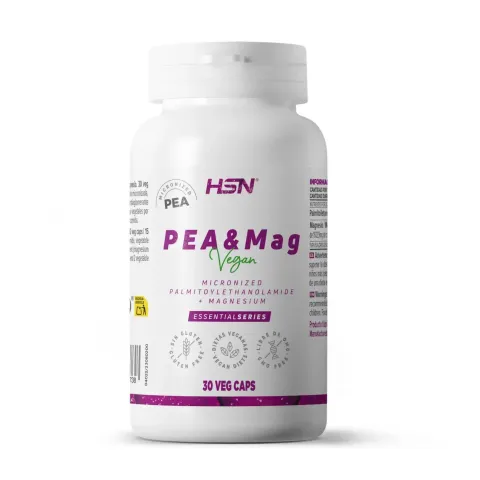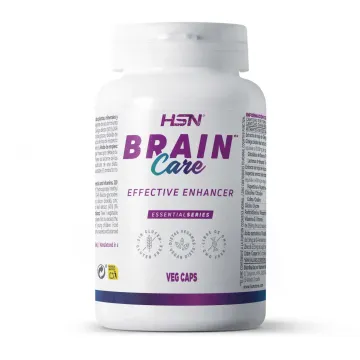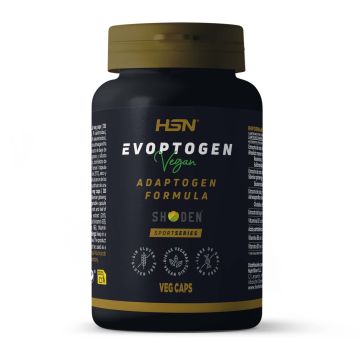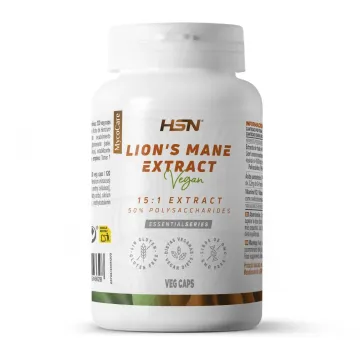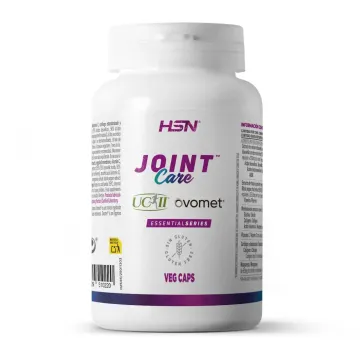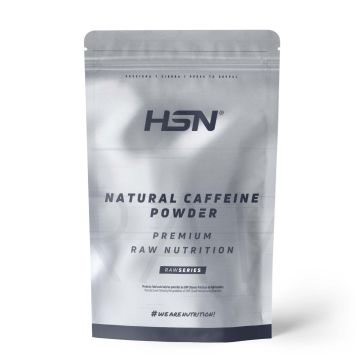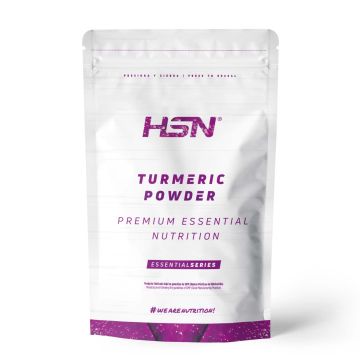- A micronized Palmitoylethanolamide dietary supplement! Maximum bioavailability guaranteed.
- Effective supply of 1200 mg per daily dose of micronized PEA. With Magnesium Citrate for synergistic activity.
- Obtained from plant-based sources: PEA suitable for vegetarian and vegan diets.
- The most effective way to provide Palmitoylethanolamide since its presence in foods is very limited.
PEA & Mag is not just another product - Try it, you won’t want to change
PEA & Mag (micronized Palmitoylethanolamide + Magnesium) from EssentialSeries is a dietary supplement in vegetable capsules made from the compound micronized Palmitoylethanolamide, plant-based, and Magnesium citrate as a highly bioavailable magnesium source to make the most of its properties.
PEA, or Palmitoylethanolamide, belongs to the fatty acid amides family. PEA naturally exists in the body, is synthesized as needed by the body, and is found in all body tissues.
Our PEA & Mag is a dietary supplement with the highest absorption and bioavailability available.
Made from the best PEA raw material. Here’s the scoop
Palmitoylethanolamide from plant-based sources - Suitable for vegan diets
Palmitoylethanolamide is a compound known to be characteristic of animal structures; in fact, it was first discovered in egg yolk. This means many PEAs on the market are not suitable for vegan diets, as they come from animal sources.
However, our micronized PEA is obtained from plant-based sources, which, although rarer and therefore more exclusive and costly to produce, do exist, and at HSN we care about them because they allow us to produce a dietary supplement suitable for everyone, with the best quality.
Our philosophy doesn’t agree with limiting options for our customers just because a more suitable source for everyone is more exclusive. Our R&D team works to find the best options for all users, and that’s why our palmitoylethanolamide is also suitable for vegan diets as it contains no animal-derived ingredients.
The challenge of getting PEA through diet | Supplementation as the only practical way
Regarding the common question... Can I get PEA through my regular diet?
The answer is yes, but with a huge but.
PEA is found in many food sources at levels ranging from 950 µg/g fresh weight in soy lecithin to 7.2 µg/g fresh weight in roasted coffee, 0.14 µg/g fresh weight in carilla beans, and less than 10 ng/g dry weight in apples, lentils, and potatoes. It’s also present in human milk, with levels between approximately 0.1 and 3 nM.
The but is that to put these numbers in perspective, PEA has been used in clinical trials at doses between 300 and 1200 mg per day, which would require daily consumption of 0.32–1.3 kg of soy lecithin, 42–170 kg of roasted coffee, and 2200–8700 kg of carilla beans.
Scientists suspect that the safety profile of such consumption, besides being completely impractical, would be less satisfactory than that observed with PEA formulations as dietary supplements.
That’s why the best way to consume palmitoylethanolamide is through dietary supplements like our PEA & Mag.
With a significant supply of Magnesium for synergistic activity
HSN’s formula is not only effective because of the PEA itself, but also due to a combined approach with an effective and synergistic formula thanks to the presence of magnesium, an important mineral with key effects for people who want to take better care of themselves.
Magnesium contributes to the normal functioning of the nervous system and to the maintenance of bones under normal conditions.
PEA’s relevance in recent scientific research - A rising compound
The first study on palmitoylethanolamide dates back to 1957, the year the compound was discovered and named, first identified in egg yolk, soybeans, and peanut oil, and later in 1965 found in mammal tissues.
In recent decades, the number of scientific studies published on PEA has increased significantly, to the point that from 2012 to today, between 70 and 80 studies on PEA are published each year, an incredible volume of scientific research.
Don’t miss out on this trending nutritional compound, and add it to your supplement stack.
PEA info if you’re getting a blood test
Palmitoylethanolamide is a fatty acid derivative, so keep in mind the following, reported in scientific studies:
After a 300 mg dose of PEA in humans, an approximate doubling of blood lipid levels was observed two hours after administration, returning to normal levels at 4 and 6 hours.
So if you’re having a blood test that includes lipid profile evaluation (triglycerides and cholesterol, among others), let your doctor know because they may recommend not taking the supplement the night before the test to avoid “false” blood lipid results.
Supplements to combine with PEA you can’t miss
PEA pairs well with many compounds, including:
However, you can really combine PEA & Mag with any other dietary supplement since it has no contraindications for combined use.
Bibliographic references
- Bartolucci, M. L., Marini, I., Bortolotti, F., Impellizzeri, D., Di Paola, R., Bruschetta, G., Crupi, R., Portelli, M., Militi, A., Oteri, G., Esposito, E., & Cuzzocrea, S. (2018). Micronized palmitoylethanolamide reduces joint pain and glial cell activation. Inflammation research : official journal of the European Histamine Research Society ... [et al.], 67(10), 891–901.
- Jung, J. I., Lee, H. S., Jeon, Y. E., Kim, S. M., Hong, S. H., Moon, J. M., Lim, C. Y., Kim, Y. H., & Kim, E. J. (2021). Anti-inflammatory activity of palmitoylethanolamide ameliorates osteoarthritis induced by monosodium iodoacetate in Sprague-Dawley rats. Inflammopharmacology, 29(5), 1475–1486.
- Steels, E., Venkatesh, R., Steels, E., Vitetta, G., & Vitetta, L. (2019). A double-blind randomized placebo controlled study assessing safety, tolerability and efficacy of palmitoylethanolamide for symptoms of knee osteoarthritis. Inflammopharmacology, 27(3), 475–485.
- Clayton, P., Hill, M., Bogoda, N., Subah, S., & Venkatesh, R. (2021). Palmitoylethanolamide: A Natural Compound for Health Management. International journal of molecular sciences, 22(10), 5305.
- Gabrielsson, L., Mattsson, S., & Fowler, C. J. (2016). Palmitoylethanolamide for the treatment of pain: pharmacokinetics, safety and efficacy. British journal of clinical pharmacology, 82(4), 932–942.
- Lang-Illievich, K., Klivinyi, C., Lasser, C., Brenna, C. T. A., Szilagyi, I. S., & Bornemann-Cimenti, H. (2023). Palmitoylethanolamide in the Treatment of Chronic Pain: A Systematic Review and Meta-Analysis of Double-Blind Randomized Controlled Trials. Nutrients, 15(6), 1350.
 Before
Before After
After During
During Morning
Morning Afternoon
Afternoon Night
Night Before
Before After
After During
During Morning
Morning Afternoon
Afternoon Night
Night







